Matador Network's Blog, page 624
July 21, 2021
Why you should visit Fargo, North Dakota, for so much more than its famous wood chipper
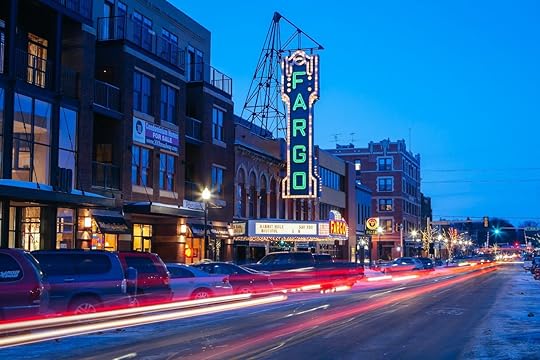
A blood-spattered wood chipper isn’t exactly the ideal civic mascot. But in Fargo, they roll with it.
The notorious piece of landscaping equipment where Steve Buscemi met his unfortunate end in the movie Fargo is on display at the Fargo-Moorhead visitors center. There’s even a selfie-friendly replica outside so the lines inside don’t get too long.
Next to the chipper, you’ll see families making all sorts of grizzly poses as people try to climb inside like aspiring human fertilizer. The wood chipper adorns everything from blood-covered t-shirts to Christmas tree ornaments — all available in the visitors center gift shop.
To some, the wood chipper is a fun roadside attraction along Interstate 29 that’s a nice stop next to a strip of chain restaurants that makes for a fun photo op and a way to check North Dakota off their list of states to visit. But stopping in Fargo only for its wood chipper is missing what makes it so charming. Delve in a little further, and you’ll find a college-cool historic town where it’s hard not to have a great time.
Red bricks and neon make for a perfect downtown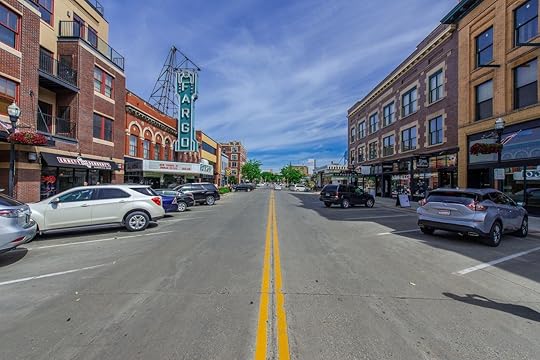
Photo: Guy William/Shutterstock
Fargo was originally founded as a rail town, built where the Northern Pacific Railroad crossed the Red River on the border of North Dakota and Minnesota. Though the railroad has long since lost its spot atop the American transportation hierarchy, Fargo still bustles like a major railroad hub.
Maybe it’s the college-aged energy – the city is home to North Dakota State University – or maybe it’s because it’s the largest city between Minneapolis and Seattle along this northern stretch of America, but Fargo exudes the feel of a city five times its size in downtown’s few square blocks.
Downtown Fargo is a low-slung maze of red brick and neon, where a trip down Broadway on a Friday brings you under bright beckoning signs for packed bars like the Toasted Frog and Blarney Stone.
While one might think an agricultural college town stuck out on the prairie would be all about drinking, it’s not so. Downtown is equally as impressive for its collection of restaurants, where the fine dining spot Mezzaluna could hold its own with any upscale, big city Italian joint (go for the brilliant white pesto bucatini and Dakota-adapted bacon-wrapped bison meatloaf). The Boiler Room is a cozy, underground hangout that plates up a delightful short rib stroganoff, alongside Marge’s World Famous Hotdish, a bison and mushroom platter that may or may not be a tribute to Frances McDormand’s legendary character.
The Boiler Room sits in Roberts Alley, a tucked away stretch of bars, restaurants, and the city’s best ice cream shop, all hidden half a block off Broadway, Fargo’s main drag. Just off the alley you’ll find Young Blood Coffee, the state’s best roaster and a regular stop for morning cyclists and sluggish students.
Roberts Alley is also one of Fargo’s many homes for decorative murals. There’s a short walking tour you can follow, but the star of the Instagram show is the Mario Wall, which is a brick façade painted to look like the first level of Super Mario Brothers. If you don’t try and head-butt a question mark box, don’t even bother taking a picture.
The Fargo Theater anchors downtown, and the historic 1926 art deco building is the city’s other signature photo-op. A few blocks down Broadway is the Hotel Donaldson, one of the coolest hotels in America that few have ever slept at. Each room at the HoDo is designed by a different artist, meaning no two stays are the same. And it boasts a sunny rooftop from which to enjoy summer drinks, with a 50s-era cocktail bar on the ground floor so you can enjoy them when the North Dakota weather isn’t cooperating.
Fargo is intrinsically walkable, as you can stroll from the historic rail depot down Broadway to Front Street, enjoy a beer at DCR Brewing, check out the rooftop at the Donaldson, and walk back along the Red River in under an hour. You can even stop at Broadway Square, a small public park with a skating rink in the winter a spot for outdoor movies in the summer.
A city spread among two states offers scenic state-line paddling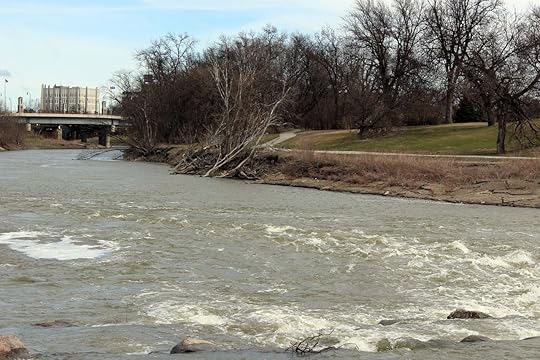
Photo: year/Shutterstock
Fargo’s walkable, energetic downtown sits right along the Red River, and it’s a literal stone throw from Moorhead, Minnesota. That city is effectively the eastern half of metropolitan Fargo, and it’s where you’ll find the area’s historical museum at the Hjemkomst Center. Don’t get too caught up in trying to pronounce it, though listening to your GPS try to is entertaining.
Under the towering tarpaulin you’ll find the ship for which the museum is named: a Viking ship recreation that sailed from Duluth, Minnesota, to Norway in 1980. In the backyard, you’ll find the museum’s most impressive asset, the Hopperstad Stave Church. This intricate wonder of woodworking is an exact replica of a Nordic cathedral in Vik, Norway, and is the life project of Guy Paulson.
Just outside the museum, kayaks and canoes sit next to the Red River, ready to be rented for a trip into frontier exploration. As far as outdoor activities in Fargo go, this is your best option. It allows you to traverse the city’s center by water, paddling and stopping at grassy parks and inlets along the way.
Delving further into Moorhead, you’ll find a couple of the area’s best breweries at Junkyard and Swing Barrel. The latter is a Donkey Kong-themed endeavor, with a Honey Peach ale called Sweet Melissa that pairs perfectly with the brewery’s sunny side patio.
Fantastic beers and ciders you have to come to Fargo to find
Photo: Dekker Brewing Company/Facebook
Though you’d be hard pressed to find a city in America that doesn’t tout its collection of craft breweries in 2021, Fargo’s really does stand out. It’s just that, aside from Fargo Brewing’s 2019 adoptable-dogs-on-cans campaign, you never really hear about the breweries unless you’re in the area. North Dakota breweries don’t typically have a wide distribution, so if you want to try it, you’ll have to come visit.
Dekker Brewing is the city’s coolest place to kick back with a cold one, and it’s set in an 1883 rail shop they’ve dubbed Brewhalla. The massive space is as close to a boisterous beer hall as you’ll find in Fargo, and it’s become a gathering place for the city on weekends. On any Saturday when it’s above freezing, you can find college kids lounging inside, families on the outside patio playing games or relaxing by a fire pit, and plenty of young professionals drinking what’s become some of Fargo’s favorite beer.
Fargo Brewing is also a top spot for suds. Its Iron Horse Pale Ale and original lager are the two stalwarts, but sample the seasonal beers and other one-off stuff while here. During summer, the brewery also has frequent concerts in its sprawling parking lot.
But perhaps Fargo’s most notable brewery isn’t a brewery at all, but rather a cider house. Wild Terra Cider will delight even non-cider drinkers, as the experimental brews cover such a broad range of flavors it’s hard not to agree with at least one. The options run from dry to sweet, and taste especially refreshing on a hot, windy summer afternoon. Enjoy one or two outside, but remember most of them hover around 7% ABV. Don’t let the fruity flavors fool you.
Fargo college football weekends are a must for any fan
Photo: Ken Wolter/Shutterstock
Though Fargo’s heart may be an agricultural hub, its soul is a college town. You’ll see this if you visit on a Saturday in the fall, when the entire city buzzes in excitement for their beloved Bison. They’ve won eight of the last nine FCS championships, and regularly beat schools from the division above them like Iowa and Minnesota.
The football team’s success has turned Fargo into one of the biggest college football scenes west of Nebraska. The entire state converges on the Fargodome for one of the great American tailgate experiences. Much like the city, it’s not all about drinking, either. Sure, someone will inevitably offer you a shot on a ski within half an hour of showing up in the Fargodome parking lot. But you’ll also meet farmers, Native Americans, Norwegians, and all the people that make North Dakota such a unique place.
Fargo’s not an easy place to reach. It has a regional airport, yes, but the only nonstop flights are to hubs like Denver, Dallas, Minneapolis, and Chicago. And rarely are tickets cheap. But Fargo has organically created what other small cities try to capture, making itself a legitimate tourist destination and not just a place to stop on a road trip. That said, if your only reason for visiting would be a stop along a cross-country drive, do yourself a favor and plan a few days here. If nothing else it’ll make you a lot more knowledgeable next time someone brings up the wood chipper. 
The post Why you should visit Fargo, North Dakota, for so much more than its famous wood chipper appeared first on Matador Network.
This website’s new feature is a game changer for travelers with a disability

Traveling is always a bit of a hassle that requires special considerations and planning, but this is particularly true for those with disabilities. Thankfully, companies and services have become available in recent years to make exploring the world more accessible for travelers with a disability. One of those companies, Wheel the World, focuses on empowering those with mobility issues.
The site’s new accessibility mapping system (AMS) allows travelers with a disability to customize their own personal accessibility profiles. These are then matched with trips compatible with the individual’s needs in over 50 destinations, complete with places to stay, activities, and tours. Destinations with wheelchair accessibility, braille signage, adaptive equipment availability, bed heights, and transcription assistance, are also spotlighted. This information is crowdsourced from mappers who visit over 200 data points around the world and log the details in the app.
“Thanks to our volunteer mappers,” the company’s co-founder and COO, Camilo Navarro, said in a statement, “we have the most thorough and up-to-date accessibility information of any online travel site. Having this information so readily available is a game changer for travelers with disabilities. What might have taken them hours to research in the past, can now take just minutes.”
The site was started by a group of students at the University of California, Berkeley, who wanted to help a quadriplegic friend travel with them to Chile. They’ve since assisted thousands of travelers with a disability visit countries around the world. 
The post This website’s new feature is a game changer for travelers with a disability appeared first on Matador Network.
Monaco is more than a millionaire’s playground. Here’s how to visit on a budget.
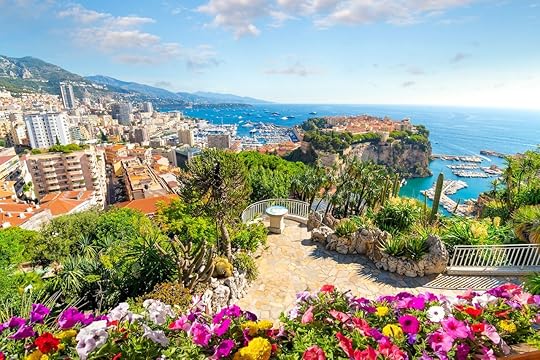
Fast cars and A-listers who yacht in for the day are par for the course in Monaco. The little principality on the French Riviera holds the record for the most millionaires per capita, due to its status as a tax haven. Signs of wealth are everywhere: Lamborghinis and Ferraris are parked outside Monte Carlo’s famous casino and the posh Hôtel de Paris. And visitors gawk at them the way they might gaze at the Matterhorn, or the Eiffel Tower. In other words, glitz is part of the landscape.
However, existing parallel to this is a different Monaco; the Monégasque’s Monaco. The actual citizens of the principality are a tiny fraction of the population as a whole: Of nearly 40,000 people living there, about one fifth hold Monégasque citizenship — and these Monégasques are often lost in the glamour of it all. You can usually identify the locals by their Italian-tinged accents. They’re the ones who tend to live in the pastel-colored Old Town or the Belle Epoque villas in the La Condamine neighborhood, away from the unsightly and imposing high-rises of Monte Carlo. They also know the hidden and quiet corners of Monaco’s four districts: Old Town, La Condamine, Fontvielle, and Monte Carlo. Their side of the principality is certainly worth discovering: There is a lot of charm and authenticity to be found in what can seem like a paradise of artifice — and it can all be enjoyed on a budget.
Market day is every day and that’s where all the approachable people and good snacks are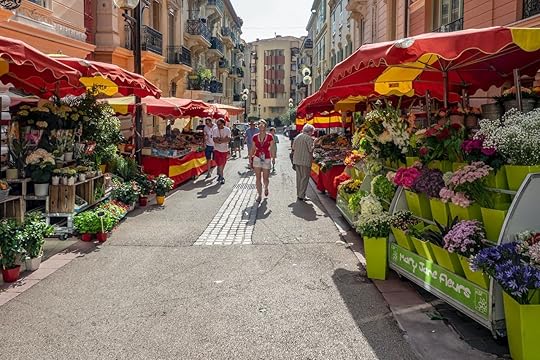
Photo: Chris Lawrence Travel/Shutterstock
The heart and soul of Monaco is the daily food market in La Condamine neighborhood situated on the Place d’Armes, just under the ancient ramp leading up to the Old Town. Every morning fruit and vegetable vendors set up their stands, shielding themselves from the hot sun with yellow and orange umbrellas that add an extra touch of color to the stacks of vibrant regional produce. Inside the market hall you’ll find fishmongers, butchers, cheese makers, and traiteurs selling prepared regional specialties. Join locals at the bar of one of the market cafes — they’re the ones sipping an espresso, or, sometimes, a morning Pastis, gossiping and sharing their afternoon plans which usually include a big lunch and long nap. Don’t leave without trying the best of Monégasque street food such as “barbagiuan,” a fritter stuffed with Swiss chard and ricotta, and “pissaladière,” pizza topped with caramelized onions and anchovies. Chez Roger’s stand is the place to try these, as well as the ultimate Riviera snack, “socca,” or chickpea pancake. Roger makes it just right, slightly spongy in some parts and charred in others.
Go sun yourself on a secret beach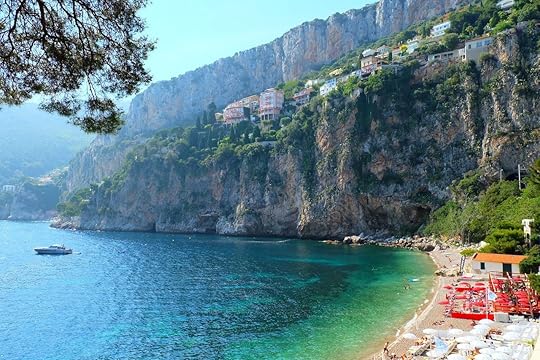
Photo: Margarita Hintukainen/Shutterstock
Hiding in Cap D’Ail, a small village just over the border in France, is the ultimate secret Riviera beach. To get there, you can hike the Sentier du Cap D’Ail, (the Cap d’Ail Trail), which locals call the Monégasque’s Promenade. The 3.5-kilometer coastal walk is lined with fragrant parasol pine and orange trees, as well as pretty Belle Epoque villas. At the end of the trail is a set of 153 stairs. Climb down, and voilà: You’re at Mala Beach, a perfect, quarter moon-shaped stretch of soft sand, where the Mediterranean is a particularly turquoise.
Locals like to come for an early morning or late afternoon swim when it’s not too crowded. But even at peak beach time the vibe is low key. Mala is also surrounded by seaside cliffs which beckon the occasional diver. There are two on-site private beach restaurants — Eden Plage and La Reserve — where you can have lunch, or rent a beach lounger and umbrella. Monaco does have its own public beach, Larvotto Beach, but it’s rocky and not nearly as charming.
Visit the locally loved bars, cafes, and restaurantsEach of Monaco’s four districts have locally loved eateries. Generations of Monégasques have been going to the tiny, family-owned Polpetta in the Old Town for Italian classics. Stars ‘n Bars, an American-style sports bar by the Port, is a gathering spot for Monégasques, including members of the princely family, for buffalo wings, burgers, beer, and televised sports games. The atmosphere is very relaxed, i.e. the opposite of what you expect in Monaco. Le Tip Top is a low-key, inexpensive pizzeria and restaurant that’s particularly atmospheric at 3:00 AM when party-goers have poured out of the clubs. Everyone in Monaco, including former Formula One drivers like David Coulthard, goes there.
If all you want is a flat white, the local branch of a certain ubiquitous coffee chain has you covered. While the drinks are run-of-the-mill Starbucks beverages, the Monaco branch’s setting and scene is anything but standard. The patio area of the coffee shop has great views of the Mediterranean, and the clientele always accessorize their carry-out cup with the latest designer handbag or expensive watch.
Find peace and quiet in Monaco’s beautiful gardens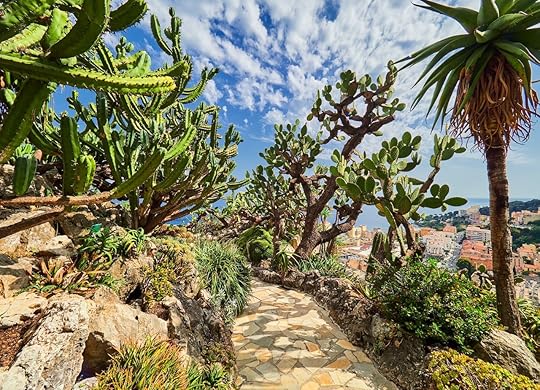
Photo: Cristian Puscasu/Shutterstock
In such a small and famously densely packed micronation there are a surprising amount of dedicated parks and greenspaces. These parks are one of the most delightful ways to spend time in Monaco. Locals like to recharge their batteries at the peaceful Jardin St Martin, in the Old Town, a long sliver of a garden bordering the sea. The garden dates back more than two hundred years; it was created to provide work for residents during a famine. They planted Mediterranean pines and myrtles and pistachio trees. Later, lush exotic species from around the world were introduced. The Princess Grace Rose Garden in the Fontvielle quarter was conceived by Prince Rainier III in memory of his wife Princess Grace, and opened two years after her death in 1982. It’s since expanded to a luscious English-style garden with eight thousand rose bushes representing 300 varieties including one that bears the princess’s name.
There are also ancient olive trees to sit under when you need a break from the hot sun. At the Jardin Exotique, succulents brought from Mexico in the 19th century seem to burst out from craggy rocks and tall cacti compete for height with the principality’s skyscrapers. The garden was built into a cliffside and you can also take in splendid views over Monaco. If you need a moment of zen in the fast paced principality head to the Japanese Garden near Larvotto Beach. Landscape architect Yasuo Beppu was faithful to the principles of Japanese garden design, incorporating bamboo hedges, waterways, bridges, and trees. Koi swim peacefully in a pond among water lilies and lotus flowers. A traditional teahouse next to a small waterfall is waiting for you when you want to sit down for a drink.
Do some luxury shopping while staying on a budgetIf you want something fancy to wear or take home then you’re in luck: The mega rich have to do something with the luxury labels they wouldn’t be caught dead wearing twice. So surmised Swedish expat Helen Rimsberg who opened Le Dressing, a designer consignment store full of once-worn luxury labels, where Monégasques in-the-know shop at. Expect a warm welcome and boutique crammed with highest end (and authenticated) labels at, on average, a third of their original price. More second-hand glam is available at the Boutique dur Rocher, a store selling beautiful crafts made by locals, homeware and antique toys, as well as recycled items from the fancy balls Monaco is known for; chic tablecloths from the Bal de La Rose, for example, were recycled into face masks and tote bags. Profits from the shop, which was founded by Princess Grace, support local charities.
Sopranos and soccer provide much better entertainment than celebrity-spotting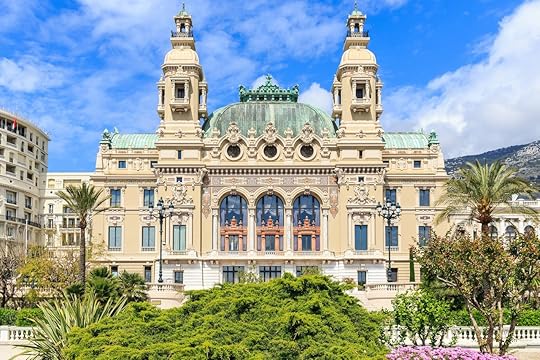
Photo: emperorcosar/Shutterstock
While the opulent opera house, designed, like the one in Paris, by Garnier, is definitely in the glitzy category (it’s even in the same building as Monte Carlo’s famous casino), a night of high culture shines a light on Monaco’s history of promoting the arts for everyone. A larger than usual chunk of Monaco’s state budget goes to the arts. As a result, tickets to concerts and ballets are subsidized and can be had for very reasonable prices. Watch the Ballets des Monte Carlo or the Opera de Monte Carlo in the Opera’s splendid gilded theater. Similarly, you can get tickets to the Monaco Philharmonic’s outdoor concerts in the courtyard of the Prince’s Palace (These are harder to score but worth a try). Also subsidized is the AS Monaco football team, part of the French Premiere League. Though soccer enjoys large popularity in Monaco, there are almost as many seats at the Louis II stadium as there are citizens, so it’s rarely full and generally pretty easy to get a ticket for a match.
When the South of France gives you lemons, make lemonade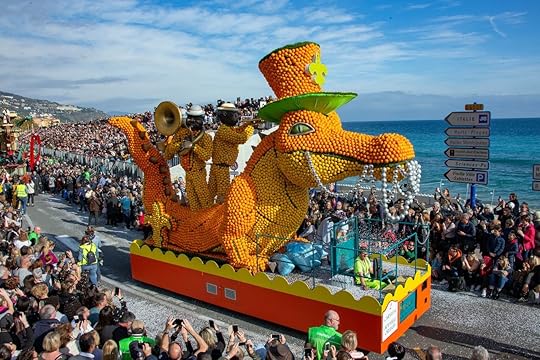
Photo: macri roland/Shutterstock
Every species of food and flora seems to get a designated festival in small town France. In this neck of the woods, it’s the lemon that’s celebrated in the neighboring town of Menton (the last stop before the Italian border). Menton is the lemon capital of Europe and La Fete du Citron held every mid-February is a charmingly cheesy affair. All the floats and sculptures present at the carnival are created from lemons and oranges and the scent of citrus flora fills the air. The citruses used in the floats aren’t local. They come from Spain; Menton isn’t known for the quantity of lemons but their quality. If you aren’t in town during the festival it’s still worth a jaunt over to visit the special lemon orchard, La Citronneraie, that these quality lemons are grown in. The Menton Tourist office can set you up on a tour. 
The post Monaco is more than a millionaire’s playground. Here’s how to visit on a budget. appeared first on Matador Network.
In this small village in Cyprus, ‘thief’s kebab’ unites everyone

In the imaginations of most travelers, Cyprus is a sparkling gem of the Mediterranan, home to stunning beaches and crystal clear aquamarine waters. The island has a rich cultural and culinary heritage too; its population is divided mostly between Turkish Cypriots and Greek Cypriots. Maronites (a sect of Christains originally from Lebanon) and Armenians have also been living on the island for centuries. With so many different ethnicities on one island, often food is the one thing that brings disparate people together, unifying the island.
One dish that stands out in particular is called kleftiko in Greek or hirsiz kebabi in Turkish, meaning “stolen” and “thief’s kebab” respectively. This iconic dish is widespread in Greece, but In Cyprus, where many different Mediterranian and Middle Eastern ethnic identities intermingle, kleftiko is just as popular. In a small village called Kormakitis, you can have the best kleftiko in Cyprus.
What is kleftiko?There’s a good reason why this dish is sometimes also called thief’s kebab. In the past, it was very common for people who were living in the mountains to steal sheep. When it came to cooking their stolen dinner, the thieves had to be smart. If an angry sheep herder caught sight of smoke, the thieves would have been caught. In order to avoid being spotted, they would dig a hole, fill it with wood, light a fire, and pile tiles on top. The meat was cooked on top of the tiles, covered in a layer of carob or daphnia leaves, while soil sealed up the hole, preventing any smoke from escaping. According to the Guardian, “sheep rustling bandits,” were known as klephts, hence the origins of the name kleftiko.
My grandfather, who hails from the village of Kormakitis, recalls witnessing the preparation of kleftiko by members of his own family.
“My grandfather’s uncle did it once but he couldn’t cover it properly,” he tells me “Shepherds smelled it and they started looking for the meat. So my great-uncle hid and waited until they were gone!”
How kleftiko is cooked todayOriginally, kleftiko was cooked with hardly any other ingredients other than the lamb itself — other than perhaps a few herbs plucked from the mountainside. Today the dish is still as simple as can be — slow cooked for at least 2 hours in garlic and olive oil, often with potatoes and roasted peppers on the side. To mimic the hole in the ground sealed by soil, the lamb is often wrapped securely in parchment paper while it cooks. It’s considered a classic dish in Greek cuisine, served in tavernas all over Greece. But if you want to sample kleftiko in Cyprus, there is one restaurant that you can’t miss.
The best place to eat kleftiko in Cyprus
Photo: DILOCOM/Shutterstock
“My family has been running the restaurant for almost fifty years now,” says Maria, owner of Yorgo Kasap restaurant in Kormakitis. “My mother is the butcher of the restaurant and I have been working here for thirty-six years.”
Turkish Cypriots, Greek Cypriots and Maronites are all welcome at Yorgo Kasap Restaurant unites people from all over Cyprus, and it’s a popular spot among tourists too, hosting curious culinary aficionados from Turkey, Russia, the United Kingdom, and France.
The most famous dish on the menu is of course kleftiko but Yorgo Kasap also serves traditional Cypriot meze (Cypriot olives, Mediterranean salad, halloumi, hummus, and yogurt served on a platter).
If you are planning to visit Kormakitis and the restaurant, the best way to get there is to rent a car as public transport in Cyprus is unreliable. It might be tempting to spend all your days at the beach when in Cyprus but visiting this small village is worth it for the kleftiko alone. You’ll also have the opportunity to experience the slow village life of Cyprus and the island’s multicultural identity.
Let the time stand still as you enter this authentic restaurant and observe how food has the power to unite so many different people in a village with a long history.
Where: St George Square Korucam, Kormakitis, Kyrenia Cyprus 
The post In this small village in Cyprus, ‘thief’s kebab’ unites everyone appeared first on Matador Network.
Why Texas BBQ should be on your list

If you’ve never contemplated creating a travel itinerary around a single food, you probably just haven’t met the right food yet. Consider this: Through Texas BBQ alone, you can taste your way through history, geography, and culture — and emerge both well-fed and wiser for the journey.
Expect lines around the block and flavors across centuries and cultures, every practice, recipe, and bite a meaningful part of the conversation. If you don’t have weeks to dedicate to this delicious pursuit, start with the humble primer below — just know that a return visit will likely be in the cards.
Texas BBQ: across the eras
Photo: T photography/Shutterstock
The origins of BBQ in Texas go back to the Indigenous people of the Caddo Nation, who used traditional cooking methods for preparing venison and other game in the territory of present-day East Texas, writes author Robb Walsh in his Legends of Texas Barbecue Cookbook.
In later years, Spanish, Mexicans, African Americans, immigrants from Germany and the former Czechoslovakia, and cowboys from the Chisholm Trail contributed their own smoke, spices, and cooking techniques to the craft. “Texas barbecue is a feisty mutt with a whole lot of crazy relatives,” Walsh writes. But forget “whole hog” — in Texas, it was often the whole steer that historically was offered up at big community gatherings, be they political, religious, or social in nature, adds Walsh.
Nowadays in Texas, beef is still king of the BBQ pit, yielding the smoky, salty bites of umami bomb encased in a blackened bark called brisket, whose sliced offerings might as well be the official state salute. These days, Texans are so serious about their BBQ, whether moist or lean, there’s an annual Barbecue Summer Camp — for grownups — and they’ve got the nation’s only dedicated BBQ editor at Texas Monthly. (Definitely read some Daniel Vaughn before tackling any Texas BBQ road trip.)
Texas BBQ: across the state
Photo: Golubovy/Shutterstock
Though the world outside Texas typically paints the state’s BBQ with one brush — brisket, beef ribs, or sausage, rubbed with little more than salt and pepper — that brush is generally emblematic of Central Texas or Hill Country BBQ. Sure, you’ll find these damn-good classics on the menu throughout the state, but you’ll also find other surprising discoveries in your travels. Here are some important regional differences that come to mind:
• West Texas BBQ is served up cowboy style with chicken, sausage and ribs cooked over an open pit with high, direct heat.Chopped beef is an uncelebrated yet enduring part of the menu at Dallas and East Texas BBQ joints.In South Texas and throughout the state, barbacoa and carnitas are some of the most sought-after items at Tex-Mex-style BBQ restaurants.In many of Texas’s large cities, especially Houston and Austin, Korean, Japanese, Cambodian, and other cultural cuisines are giving rise to exciting new flavors through the vessel of BBQ — new flavors that you can only find here.In other words, you’ve got to tread carefully when making any generalizations about Texas BBQ. Larger, older, and more diverse than many states, Texas has been a proving ground for pitmasters, smokers, and chefs for centuries. Yes, you’ll find a lot of beef, but you’ll also encounter some of the most delicious pork, turkey, chicken, duck, sausage, and even goat. And it’s still a constantly evolving experiment, so you can never really have the same BBQ trip twice.
Going beyond the platter
Photo: Trong Nguyen/Shutterstock
One of the reasons BBQ has historically been so endearing is both its accessibility and its representation as a food of and by the people. Smoking a brisket is an hours-long, sweaty labor of love. The fact that it endures in a time of faster-than-fast food and meal delivery apps says something about Texas as a whole.
“Pitmasters have become primary to the conversations,” says Kelly Yandell, Texas food writer, photographer, and past president of the Foodways Texas advisory board. “This is difficult, creative labor that often takes place over the span of 14 to 16 hours. They’re sleeping on mats in the back when they get started. It’s a real appreciation of labor in a world where we’ve sort of moved away from [that] in favor of technology.”
So pull up a chair at a beloved BBQ joint and start appreciating. You’re likely to be seated at a long table in earshot of a few dozen locals. Your tools are humble: pink butcher paper, a sack of white bread (or maybe even a few tortillas), paper napkins, and plastic utensils — though consider just diving in with your hands. In some places, they’ll load you up with sides; in others, you’re encouraged to bring your own.
But as incredible as Texas BBQ is, it’s also the stories you’ll learn along the way that make for such a meaningful vacation itinerary. The hours-long lines at the buzziest joints are tailgate-like occasions filled with fun conversations, donuts, and cold beers passed down the line. Or sometimes it’s about sitting with a fourth-generation proprietor whose business has witnessed the entire lifespan of its community. Those conversations and life lessons are invaluable — yet they’re often so graciously served up for free alongside a portion of ribs and collard greens. It’s hard to find a more meaningful travel experience than that. 
The post Why Texas BBQ should be on your travel bucket list appeared first on Matador Network.
July 20, 2021
12 Airbnbs in Charleston for a bachelorette party filled with southern charm
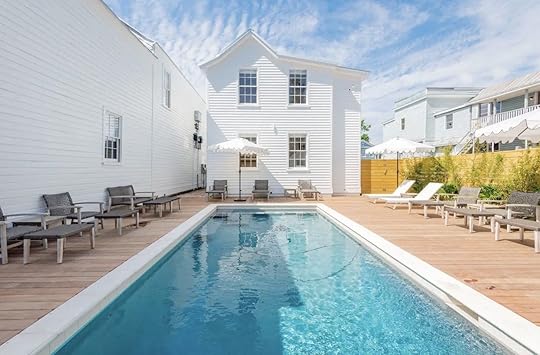
We hope you love the spaces and stays we recommend! Just so you know, Matador may collect a small commission from the links on this page if you decide to book a stay. Listed prices are accurate as of the time of publication.
There’s no place like Charleston to have a bachelorette party. Gorgeous sightseeing complements the city’s legendary food and drinks scene, and several chilled-out beaches line the city’s coast. Whether you’re looking to spend relaxing nights in after a day on the town, or you want to find the best place to check out Charleston’s nightlife, there are dozens of Airbnbs to choose from here. The following listings are the best Charleston Airbnbs for a bachelorette party, from historic downtown guest houses to homes in some of the city’s more eclectic neighborhoods.
1. Historic downtown house with pool
Photo: Airbnb
Why tour historic homes when you can sleep in one? This large historic house has been recently renovated and has a wraparound porch, as well as a private courtyard with a pool, perfect for sipping wine and watching the sunset. Just a short walk to the action on Upper King Street or a short ride to Rainbow Row and the Battery, this stay could be the perfect home base for exploring downtown Charleston.
Ten guests, four bedrooms
Price: $642 per night

Photo: Airbnb
If your party has members traveling by plane, consider this three-bedroom home only eight minutes from the airport. Located in Park Circle, the historic district of North Charleston, this stay is within walking distance of the neighborhood’s eateries and a short drive away from downtown Charleston and nearby beaches. The house also has a backyard with a fire pit, and a screened-in porch to enjoy drinks without getting stung by mosquitos.
Eight guests, three bedrooms
Price: $451 per night

Photo: Airbnb
For a larger group looking to enjoy Charleston in style, this elegant apartment offers a variety of amenities with a great location. This stay is in historic downtown, just a few blocks from King Street. Made up of two units, the apartments are connected by an interior door, creating a luxury four-bedroom, three-bathroom suite. There’s also an outdoor patio for laughs and bubbles.
Twelve guests, four bedrooms
Price: $973 per night

Photo: Airbnb
This beautifully decorated home in West Ashley offers the perfect place to rest after a day exploring downtown Charleston or soaking up the sun on Folly Beach, both less than 30 minutes away. Located across the Ashley River from downtown Charleston, the West Ashley district also offers plenty of bars and restaurants of its own. The house sleeps eight, and its full patio is sure to be the perfect place for afternoon cocktails or party games.
Eight guests, three bedrooms
Price: $475 per night

Photo: Airbnb
This house in the Cannonborough/Elliotborough district is the perfect stay for a group of foodie bachelorettes. Ten of the city’s most well-known restaurants are located in the district, not to mention more further south on the peninsula. Regardless of where you choose to dine, the home’s location near King Street is perfect for experiencing the town without the street noise from traffic and nightlife.
Five guests, two bedrooms
Price: $216 per night

Photo: Airbnb
Just two blocks from Charleston’s iconic Rainbow Row, this second-floor condo suitable for for five guests has an almost unbeatable location for exploring Charleston’s historic district. The stay is also a quick walk from Waterfront Park, the perfect place to soak up the sunshine within view of the river and some of the city’s most beautiful historic homes.
Five guests, two bedrooms
Price: $530 per night

Photo: Airbnb
For a group who’d prefer to spend their days lounging on the beach, this beachfront home on Folly Beach won’t disappoint. With a large living space and porch, the house offers the perfect space for catching up and relaxing. After a day on the beach, head to downtown Charleston (only 11 miles away) for dinner and drinks. Parking won’t be an issue here, with room in the driveway for up to six vehicles.
Nine guests, five bedrooms
Price: $377 per night

Photo: Airbnb
Just one block away from Upper King Street, this seven-guest apartment offers a place to explore Charleston’s historic district for a lower price than stays further south on the peninsula. The apartment has a lot of character, with exposed beams and open kitchen shelving, not to mention it’s within walking distance to bars and clubs.
Seven guests, two bedrooms
Price: $287 per night

Photo: Airbnb
This colorful Avondale home can accommodate up to nine guests and includes a large porch for socializing and a hot tub in the backyard. Avondale, another neighborhood located across the river from downtown Charleston, is sometimes called the downtown of West Ashley. Shops and restaurants are within walking distance, and downtown and beaches are nearby.
Nine guests, four bedrooms
Price: $600 per night

Photo: Airbnb
If you want to stay on the main peninsula, but don’t want to splurge on a stay closer to downtown, this guest house is the perfect fit. Harleston Village is home to the College of Charleston campus, as well as a number of historic homes and churches. The second floor of the town-style home is equipped with two bedrooms, a full kitchen, and a spacious living area.
Six guests, two bedrooms
Price: $225 per night

Photo: Airbnb
This historic home, which uses modern decor with vintage touches, can welcome up to ten guests. The stay is close to everything including the historic district, Charleston’s French Quarter, and other points of interest downtown. Spend the day sightseeing, and return for a spa night to make use of the home’s large pool and chill-out area in the back. This stay is also a great base for a walk through historic Charleston.
Ten guests, four bedrooms
Price: $659 per night

Photo: Airbnb
If you’re worried about having enough space to get ready for a night out, this house is your answer. This stay in the Cannonborough/Elliotborough district along Upper King Street sleeps nine guests, with four queen size beds and three full baths. The house also has a parking space for a car and lists other parking areas in its description. 
Nine guests, three bedrooms
Price: $784 per night
The post 12 Airbnbs in Charleston for a bachelorette party filled with southern charm appeared first on Matador Network.
These are the top airlines in the world for 2021

After a very difficult year in 2020, travel is picking up again, and so are airlines. As you prepare for your first trip after the worst of the COVID-19 pandemic, The Points Guy and AirlineRatings have put together their annual reports ranking the best airlines for 2021 so you can make an informed choice as to which carrier will take you on vacation this year.
The Points Guy’s best US airlines of 2021
Coming in hot for the top spot for the third year in a row is Delta with a score of 67.93 out of 100. The airline is praised for rarely bumping passengers and how easy it is to find and get into its lounges, but suffered in the affordability category.
Spirit and Allegiant switched places this year. Spirit was 10th (the last place) in 2020. It now sits in eighth place for the lack of canceled flights and its affordability. Unfortunately, that doesn’t make up for all of the expected fees for everything — bags, wheelchairs, and change fees. Allegiant is now dead last. It failed to make sure flights arrived on time, or at all. It reportedly also has poor family-friendly policies and rewards points aren’t worth much.
The best US airlines of 2021 according to The Points Guy:
DeltaSouthwestUnitedAlaskaAmericanJetBlueHawaiianSpiritFrontierAllegiantAirlineRatings’ ranking of the best airlines in the world in 2021
AirlineRatings rated 20 airlines this year. Air New Zealand, which has ranked six times over several years as number one, including last year, is now ranked number two. And Singapore Airlines, which ranked number one in 2019, is now number three. CNN reported that Air New Zealand has now been replaced by Qatar Airways for its cabin innovation, catering, in-flight service, and its commitment to staying open during the pandemic.
“In our objective analysis Qatar Airways came out number one in many of our audit criteria, which is a great performance at this very difficult time,” Geoffrey Thomas, editor-in-chief of AirlineRatings, said. “For years Qatar Airways has been the gold standard, and it just keeps getting better with new passenger innovations and new state-of-the-art aircraft models.”
Qantas sits at the number four spot and is also ranked as the safest airline. And rounding out the top five is Emirates. Other awards were best first class (Singapore Airlines), best cabin crew (Virgin Australia), and best airport lounges (Qantas).
The best airlines in the world in 2021 according to AirlineRatings:
Qatar AirwaysAir New ZealandSingapore AirlinesQantasEmiratesCathay PacificVirgin AtlanticUnited AirlinesEVA AirBritish AirwaysLufthansaAll Nippon AirwaysFinnairJapan AirlinesKLMHawaiian AirlinesAlaska AirlinesVirgin AustraliaDelta Air LinesEtihad Airways More like thisAirports + FlyingAirline alcohol bans mean we may never achieve the perfect in-flight beverage
More like thisAirports + FlyingAirline alcohol bans mean we may never achieve the perfect in-flight beverageThe post These are the top airlines in the world for 2021 appeared first on Matador Network.
Vrbo is giving away 30 stays valued at $5,000. Here’s how you can win.

Vrbo is holding a contest that everyone can get on board with, especially as we try to shake the COVID-19 lockdowns. This contest gives family and friends an opportunity to reunite with one another in a unique, budget-friendly way. One lucky winner each day, for 30 days, will win a $5,000 vacation. This credit can go towards any Vrbo rental of your choosing anywhere in the world.
Vrbo hand-selected a Trip Board full of homes and vacation rentals that is family-approved and located throughout the US in many areas like beaches, mountains, lake destinations, and more.
The contest runs until August 13. To enter the contest, participants must follow these rules:
Follow Vrbo on Twitter or InstagramPost a photo of yourself with the person you’ve missed mostInclude a caption explaining why you can’t wait to reuniteUse #VrboReunionContest“Grandparents want to kiss their grandchildren. Aunts and uncles want to hug their favorite nieces and nephews. Families are ready to travel again and finally see their loved ones face-to-face,” said Lish Kennedy, vice president of global brand marketing at Vrbo, in a press release. “We want to ensure this year is filled with as many joyful, laughter- and tear-filled reunions as possible because we’ve all been waiting a long time to see our favorite people again.”
Vrbo will announce winners daily on their Instagram and Twitter accounts, giving participants numerous chances to win. For more details and rules on the contest, you can visit their website. Make sure to check their social media daily and see if you are the next winner. 
The post Vrbo is giving away 30 stays valued at $5,000. Here’s how you can win. appeared first on Matador Network.
7 rejuvenating hot springs in California you need to visit this summer

Weekend trips to water bodies are a requisite for summer travel. As the thermometer creeps toward the triple digits, the idea of cooling off at the beach, by a lake, on a river, beneath a waterfall, or in a local pool grows proportionally enticing. The one water body travelers may be quick to dismiss in the heat of summer is a hot spring. Not so fast, we say. Mineral-rich waters are always restorative, regardless of the outside temperature. And most hot springs resorts offer cold plunge pools and steamy tubs for the ultimate soaking experience.
If you’re in California this summer, geothermal getaways are the perfect way to break up your beach weekends. Here are seven of the most spectacular hot springs in California you need to visit, from rustic natural pools to splurgy spa resorts.
1. Wild Willy’s Hot Springs
Photo: bonandbon/Shutterstock
Scenic, rustic, and remote, Wild Willy’s Hot Springs is located an hour south of Yosemite near the Mammoth Lakes, an area replete with geothermal waters. There are two natural pools on site, which visitors can access by following a rugged dirt road off Highway 395 to a parking area, where they’ll continue a quarter-mile on foot down a long boardwalk with a panoramic view. Of the two springs, the heart-shaped one located to the left of the boardwalk runs hotter.
Sometimes called Crowley Hot Springs, Wild Willy’s comes by its alliterative moniker earnestly. It can get crowded here, though plenty of visitors have reported empty pools during off hours, and these springs often attract livelier groups looking to soak with beers in hand.
2. Indian Springs Calistoga
Photo: Indian Springs Resort and Spa/Facebook
A luxurious retreat in Napa Valley, Indian Springs Resort and Spa is a stone’s throw from the Silverado Trail that weaves through Northern California’s wine country. The main draw on the property is an Olympic-sized, geyser-fed mineral pool that rejuvenates guests while the resort pampers them, with poolside beverage and snack services, an outdoor cabana lounge, umbrellas, and sunbeds. Visitors of all ages are welcome to enjoy the Main Pool, whose waters range from 92 to 102 degrees Fahrenheit, with floats and noodles available on request.
Those seeking a quieter, more intimate experience can opt to soak in the neighboring Adult Pool, which runs roughly 10 degrees colder than the Main Pool. Resort guests are guaranteed access to both pools. A limited number of day passes are available for spa guests, as well, provided they book a 50-minute treatment. Day passes cost $50.
3. Esalen Hot Springs
Photo: Esalen/Facebook
The Esalen Institute is a coveted retreat center in Big Sur that promotes wellness and spiritual education through a variety of workshops. Much of what makes the Esalen experience so extraordinary is the physical campus, which includes hot springs that perch over the Pacific Coast alongside a massage deck and ADA-accessible hot tub. Guests of the institute can book private soaks, which they’re welcome to enjoy with or without swimwear. As the website says, “Clothing is optional; contemplation is guaranteed.”
Even beyond the hot springs, Esalen has a full roster of wellness offerings, from a regular pool and massage service to an Art Barn and Meditation Hut. Moreover, guests are provided healthy, sustainable meals three times a day compliments of the Esalen Farm and Garden.
Note: Neither communal bathing nor nighttime public soaks are currently permitted due to COVID-19 precautions.
4. Wilbur Hot Springs
Photo: Wilbur Hot Springs Resort & Nature Sanctuary/Facebook
The historic Wilbur Hot Springs is located in the town of Williams about an hour north of Sacramento. Northern California’s Indigenous inhabitants were the first to discover the resort’s mineral springs, which sit at the confluence of three different hot spring networks. Legend has it that news of the site’s curative waters spread upon healing an ill Gold Rush prospector.
Today, the hot springs are laid out like a Japanese-style onsen, clothing optional, with three flumes that output water averaging temperatures from 100 to 109 degrees Fahrenheit. Also on site are a spring-fed swimming pool, cold plunge, and sauna, while the entire property is surrounded by the Wilbur Hot Springs Nature Reserve. Day use is possible if reserved in advance for a fee of $59 during the week and $65 on weekends.
5. Sycamore Mineral Springs Resort
Photo: Sycamore Mineral Springs Resort/Facebook
While many of the most famous hot springs in California were discovered up north, Sycamore Mineral Springs Resort is an excellent option on the Central Coast. Located near Avila Beach in San Luis Obispo, midway between San Francisco and Los Angeles, the resort offers several ways to soak in its mineral-rich waters: shared hillside hot tubs, private in-room hot tubs, and an oasis waterfall lagoon, which can accommodate up to eight soakers and requires reservations.
Rounding out its wellness program, the resort also offers treatments ranging from massages to facials. Both the spa and mineral tubs can be reserved by guests and non-guests alike.
6. Sierra Hot Springs
Photo: Sierra Hot Springs/Facebook
Guests of the Sierra Hot Springs Resort and Retreat Center have their pick of soaking sites: the Hot Pool, the Warm Pool, and the Meditation Pool. The steamiest of the three, the Hot Pool registers between 105 and 110 degrees Fahrenheit and sits beneath a geodesic dome alongside two cold plunges. Both the Warm Pool and Meditation Pool are open-air and hover between 98 and 100 degrees Fahrenheit. Perfect for daytime, the Warm Pool comes with an adjoining sundeck and dry sauna while the Meditation Pool comes highly recommended for starlight soaks. All three pools are clothing optional.
When they’re not soaking their muscles, visitors can work up a sweat exploring the surroundings. Roughly an hour north of Lake Tahoe, the resort is ringed by 700-plus acres of national forest that’s perfect for hiking, biking, and cross-country skiing. In addition to traditional lodging, campers are welcome to reserve a site at the on-site campground.
Note: Day use is not currently permitted due to COVID-19 precautions.
7. Travertine Hot Springs
Photo: jared ropelato/Shutterstock
As natural pools go, it’s hard to beat Travertine Hot Springs, one of several hot springs found in the Eastern Sierra’s Mono County. It’s a popular site, attracting both day-trippers and dispersed campers who pitch their tents on the surrounding forest land. Luckily, there’s more than enough geothermal water to go around with five rustic pools in total.
To reach the Travertine Hot Springs, follow Highway 395 just south of Bridgeport, then turn left at Jack Sawyer Road and continue on the dirt path for roughly one mile. Once there, the largest and hottest spring sits closest to the parking lot, while the others are a short walk away. But be warned: These springs run genuinely hot, so always dip a toe before plunging straight in. 
The post 7 rejuvenating hot springs in California you need to visit this summer appeared first on Matador Network.
Chapada dos Veadeiros is a natural paradise hidden in the Brazilian highlands

For real outdoor enthusiasts, the best that Brazil has to offer lies beyond its famous beaches. Hidden away in the interior of this vast country are a wealth of national parks, including the stunning Chapada dos Veadeiros in the Brazilian highlands. Located in the state of Goiás, just 150 miles north of Brazil’s federal capital, Brasilia, this natural paradise is a haven for adventurers seeking secret waterfalls, spectacular vistas of Brazil’s tropical savanna, and, if the rumors are to be believed, potential supernatural encounters.
The Cradle of Water
Photo: vitormarigo/Shutterstock
Chapada dos Veadeiros rests atop an ancient plateau two billion years in the making. An intricate system of converging rivers and streams has carved out a geological legacy which gives the region its second name: the Cradle of Water. Waterfalls cascade through rocky canyons and verdant valleys in their hundreds, making it impossible to pack visiting them all into a single itinerary. Some are easier to get to than others. Three waterfalls, including the mightily impressive Almécegas I, are accessible via Fazenda São Bento, a private farm a mere ten-minute drive from the popular backpacking town of Alto Paraíso de Goiás. But the best of Chapada’s natural wonders are reserved for travelers who are prepared to venture (literally) beyond the beaten track.
Chasing waterfalls
Photo: Daniel Carnielli/Shutterstock
The GO-239 and GO-118 are the two major highways which bisect Chapada’s landscape. These perfectly paved roads offer some incredible views across the savanna, which is known as the “cerrado.” In the late afternoon, hundreds gather by the roadside on the G0-239 to watch the sun set over the stunning Jardim do Maytrea, or Maytrea Garden, named for the line of palm trees that front the hills beyond. Branching off from these highways are countless dirt tracks that cut through forests and traverse valleys to reach Chapada’s hidden waterfalls.
One of the most extraordinary waterfall circuits is the Cachoeira Macaquinhos, or Little Monkey Waterfall, an easy 2.5-mile trail which lazily strafes the River Macaquinho as it cascades through a series of sublime waterfalls and emerald pools culminating in a spectacular fifty-meter drop. Getting to Cachoeira Macaquinhos is tough. Nearly 20 miles of dirt road lie between the highway and the circuit’s starting point, and the last half-mile or so is a grueling, precipitously steep descent which will test the mettle of even the most battle-hardened 4×4, but the sights that await render the hardships worthwhile.
Mirante de Janela
Photo: vitormarigo/Shutterstock
Arguably Chapada’s most famous sight is one that you’ll view through a window. The hike to Mirante de Janela can be tough, with a few steep ascents in places and some makeshift wooden staircases and wobbly handrails that hardly inspire confidence. But the trail’s climax doesn’t disappoint. Mirante de Janela — meaning “window lookout” — is a unique rock formation that perfectly frames a stunning vista of the cerrado landscape with a view of the Rio Preto Falls as its centerpiece.
Go early enough and stand in awe as you catch the last magical moments of the sunrise bathing the scene in an amber glow. Moments later, you’ll likely find yourself having to wait in line to get that perfect shot as the hordes of Instagrammers descend on the lookout. Then, escape the crowds and take refuge on the higher ground atop the wooden parapets that have been erected above the window and offer breathtaking panoramic views of the national park.
Vale da Lua
Photo: vitormarigo/Shutterstock
Most of Chapada’s waterfall hikes are well signposted and straightforward enough to manage under one’s own steam. But in order to discover the secrets of the Vale da Lua (Moon Valley), consider enlisting the services of a local guide who knows it’s hidden nooks and crannies best. The unique, lunar-like landscape has been sculpted by the erosive power of the São Miguel River, which rushes and swirls through corridors and cauldrons that have been chiseled out in the rock over the course of millions of years. Slipping below the surface to explore the rock formations solo is ill-advised, but experienced guides can lead visitors on a safe, subterranean tour of the Vale de Lua’s otherworldly network of potholes and passageways.
Supernatural encounters
Photo: Larissa Chilanti/Shutterstock
The story goes that in the 1960s, photographs taken by NASA satellites orbiting the Earth revealed that the area surrounding Chapada dos Veadeiros National Park was quite literally glowing. Considered after that to be the most luminous natural point on the globe, the orthodox explanation for this phenomenon is that the park lies upon a bed of crystal quartz that reflects light like a mirror. The spiritual energy believed to be gleaned from those crystals was enough to attract many bohemian types to the towns surrounding Chapada, but people of even more mystical persuasions have cited its geographical position as further evidence of the region’s supernatural character.
Like Machu Picchu, another area famous for its mystical energy and the former home of the Incas, Paralelo 14 — the circle of latitude 14 degrees south of the equator — cuts exactly through the Jardim Zen, or Zen Garden, a popular viewpoint on GO-118 highway. The spiritually inclined claim that the Incas, who “vanished” suddenly in the sixteenth century, built a cosmic bridge to connect their homeland to Chapada, a route now frequented by aliens — hence the unusually high reports of UFO sightings in the area. Head to any bar in the hippie towns of São Jorge and Alto Paraíso and you might catch one of the region’s many mystic societies swapping stories of extraterrestrial encounters over a cold choppe, or draft beer.
Getting there and getting around
Photo: Dea e Bruno/Shutterstock
The easiest way to arrive at Chapada dos Veadeiros is to fly to Brasilia and then rent a car for the 150-mile drive to the beginning of the vast park. Choosing a sturdy 4×4 is strongly recommended; the highway to Chapada is in excellent condition but the same can’t be said for the dirt tracks that will lead you to its waterfalls.
At Chapada, visitors tend to stay in one of two locations. The town of Alto Paraíso de Goiás is the gateway to the park and has a decent range of hostels and pousadas to cover all budgets. Twenty-five miles to the west is São Jorge, a more rustic village with fewer services but plenty of character. Stay in one of the village’s charming inns or connect with nature at an eco-camp for the full Chapada experience. From here it’s possible to walk to the starting point for the hike to Mirante de Janela, which makes São Jorge a popular jumping-off point for travelers wanting to beat the crowds and soak up the sunrise at the famous lookout spot. In both towns you’ll find cozy restaurants, quirky craft shops, and a host of easygoing locals and adventurers who perfectly embody the invigorating spirit and energy of the extraordinary Chapada dos Veadeiros. 
The post Chapada dos Veadeiros is a natural paradise hidden in the Brazilian highlands appeared first on Matador Network.
Matador Network's Blog
- Matador Network's profile
- 6 followers



